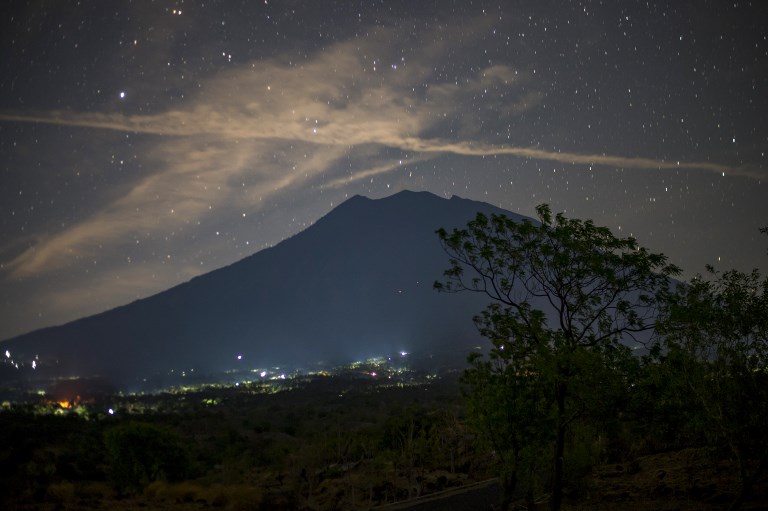The alert level for a rumbling volcano on the Indonesian resort island of Bali that forced more than 100,000 to flee has been lowered, authorities said Sunday, but there is still a chance it could erupt.
Volcanic activity in Mount Agung is slowing and the volcano’s status has been lowered from level four “danger” to level three “alert” by Indonesia’s volcanology centre.
The agency said villagers whose homes are located further than six kilometres from the crater could return home but warned that the mountain, which has been shaking for months, had not quite come to a standstill.
“The volcanic activities have not completely calmed down and there is still a potential for an eruption,” the agency’s head Kasbani, who like many Indonesians goes by one name, said in a statement.
Mount Agung, 75 kilometres (47 miles) from the tourist hub of Kuta, has been rumbling since August, sparking fears it could erupt for the first time since 1963 and triggering the highest possible alert level in September.
More than 133,000 people have been living in shelters for more than a month in fear of an eruption, even though more than half of the refugees actually live outside the danger zone.
Officials estimated Mount Agung’s increasing activity had cost Bali at least $110 million from the hit to the tourism sector and loss of productivity while villagers were staying at shelters.
Indonesia sits on the Pacific “Ring of Fire” where tectonic plates collide, causing frequent seismic and volcanic activity.
In 2010, Mount Merapi on the island of Java erupted after rumbling since 2006, while Mount Sinabung on Sumatra island — which is currently also on the highest alert level — has been active since 2013.




